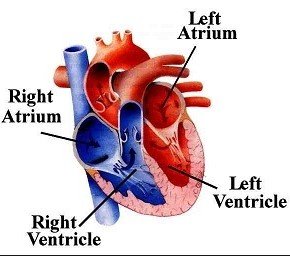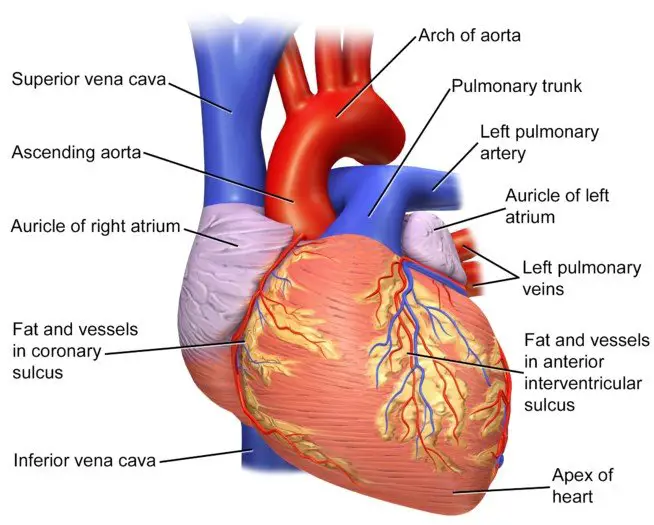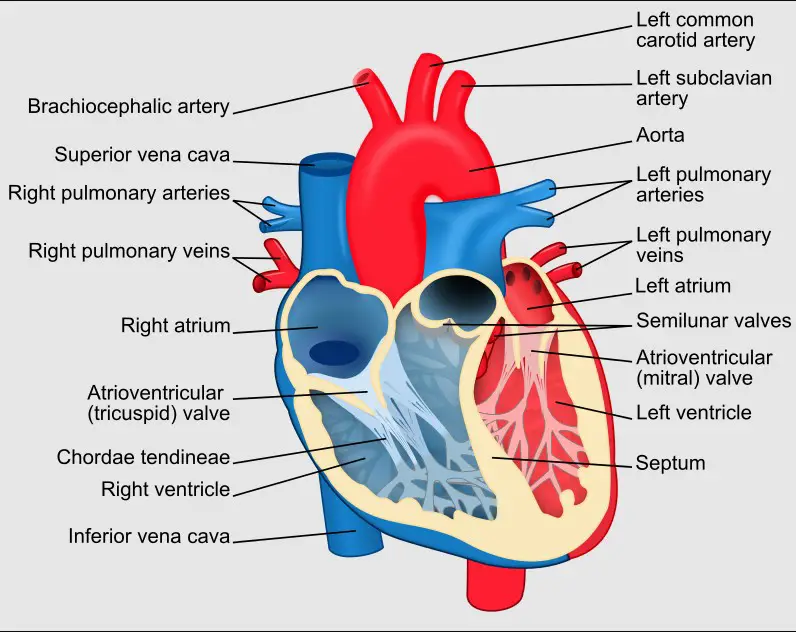The human heart is an amazing organ that is composed of four chambers, which all work together to pump blood throughout the body. Two of these chambers are the auricle and the ventricle.
While both play a vital role in the functioning of the heart, they have distinct differences that are important to understand. In this blog, we will discuss the differences between the auricle and ventricle and how they work together to keep the body healthy.
Anatomy of the heart

The heart is an incredible organ, pumping blood around our bodies day in and day out. But what makes it so incredible is the complexity of its anatomy. At its most basic level, the human heart is divided into two halves—the left and the right—each with its own set of chambers.
The two chambers in the left half are the auricle and the ventricle, while the two chambers in the right half are the auricle and the ventricle. The difference between the auricle and the ventricle lies in the function each chamber performs.
The auricle is the upper chamber of the heart and is responsible for collecting blood from the veins and pumping it into the lower chamber, the ventricle. The ventricle then forces the blood out to the lungs and to the rest of the body.
The auricle is also larger than the ventricle, which helps it to contain more blood. The ventricle, on the other hand, is the lower chamber of the heart and is responsible for receiving blood from the auricle and then forcing it out of the heart. The ventricle is smaller than the auricle, but it pumps blood with much more force.
This is due to the thicker walls of the ventricle and the presence of powerful muscles that help to push the blood out of the heart. In summary, the auricle and the ventricle are two chambers in the heart that play a vital role in the circulation of blood throughout the body. The auricle is the upper chamber that collects blood from the veins and pumps it into the ventricle, which then forces the blood out of the heart. The ventricle has thicker walls and powerful muscles that help it to push the blood out of the heart with more force than the auricle.
Difference between auricle and ventricle

When it comes to the heart, one of the most important differences to know is the difference between the auricle and the ventricle. The auricle, also known as the atrium, is a small chamber located at the top of the heart.
It receives blood from the veins and pumps it into the ventricle. The ventricle is a larger chamber that pumps the blood to the rest of the body. The auricle collects blood from the veins and pumps it into the ventricle, while the ventricle pumps the blood to the rest of the body.
The auricle’s main function is to collect blood from the veins and pump it to the ventricle, while the ventricle’s main function is to pump the blood to the rest of the body. In short, the auricle collects and the ventricle pumps.
Function of the auricle and ventricle

The auricle and ventricle are two parts of the heart that are essential for its proper functioning. The auricle is the upper chamber of the heart and is responsible for receiving the blood from the veins and pumping it into the ventricle below. The ventricle then pumps the blood out of the heart to the rest of the body.
The main difference between the auricle and the ventricle is that the auricle receives the blood from the veins, while the ventricle pumps the blood out of the heart. The auricle also helps to control the amount of blood that is being pumped by the ventricle, ensuring that the blood flow remains consistent.
The ventricle, on the other hand, has to work harder to push the blood out of the heart and into the rest of the body.
Clinical significance of the auricle and ventricle
The auricle and ventricle are two important components of the heart and understanding the difference between them is essential for any medical professional. The auricle is an ear-shaped structure located at the base of the atria, while the ventricles are the two muscular lower chambers of the heart. These two structures both play a vital role in the movement of blood through the heart, however, they have vastly different functions.
These two structures both play a vital role in the movement of blood through the heart, however, they have vastly different functions. The auricle is responsible for collecting blood from the veins and pumping it into the atria, while the ventricles are responsible for pumping blood from the atria to the lungs and the rest of the body. The auricle also helps to regulate the heart rate, while the ventricles help to regulate the blood pressure.
Understanding the distinct roles of these two components of the heart is crucial for anyone involved in the medical field.
Summary
When it comes to the anatomy of the heart, one of the major differences between the auricle and the ventricle is their purpose. The auricle, also known as the atrium, plays a vital role in the process of pumping oxygen-rich blood from the lungs to the rest of the body.
On the other hand, the ventricle is the chamber that pumps the oxygen-rich blood out of the heart and into the arteries. In addition to having different functions, the auricle and ventricle also differ in their physical structure.
The auricle is more oval in shape and contains muscular walls that help to direct blood flow. The ventricle, on the other hand, is thicker and more cone-shaped. It also has thicker walls and valves that help to ensure the blood is pumped out of the heart in the correct direction.
Conclusion
In conclusion, the main difference between the auricle and the ventricle is the size and shape. The auricle is the smaller, oval-shaped chamber of the heart, while the ventricle is the larger, cone-shaped chamber.
The ventricle is responsible for pumping out the blood to the body. Both the auricle and the ventricle are essential in maintaining a healthy heart.

